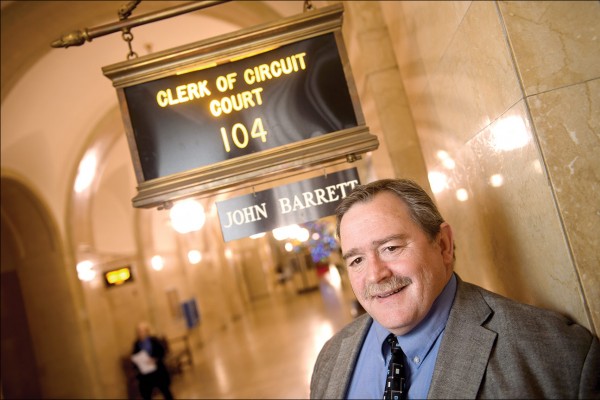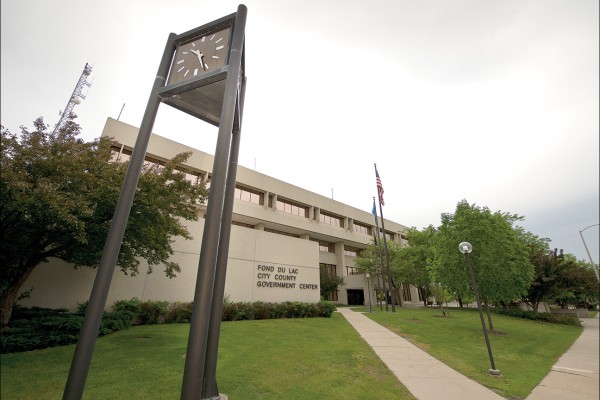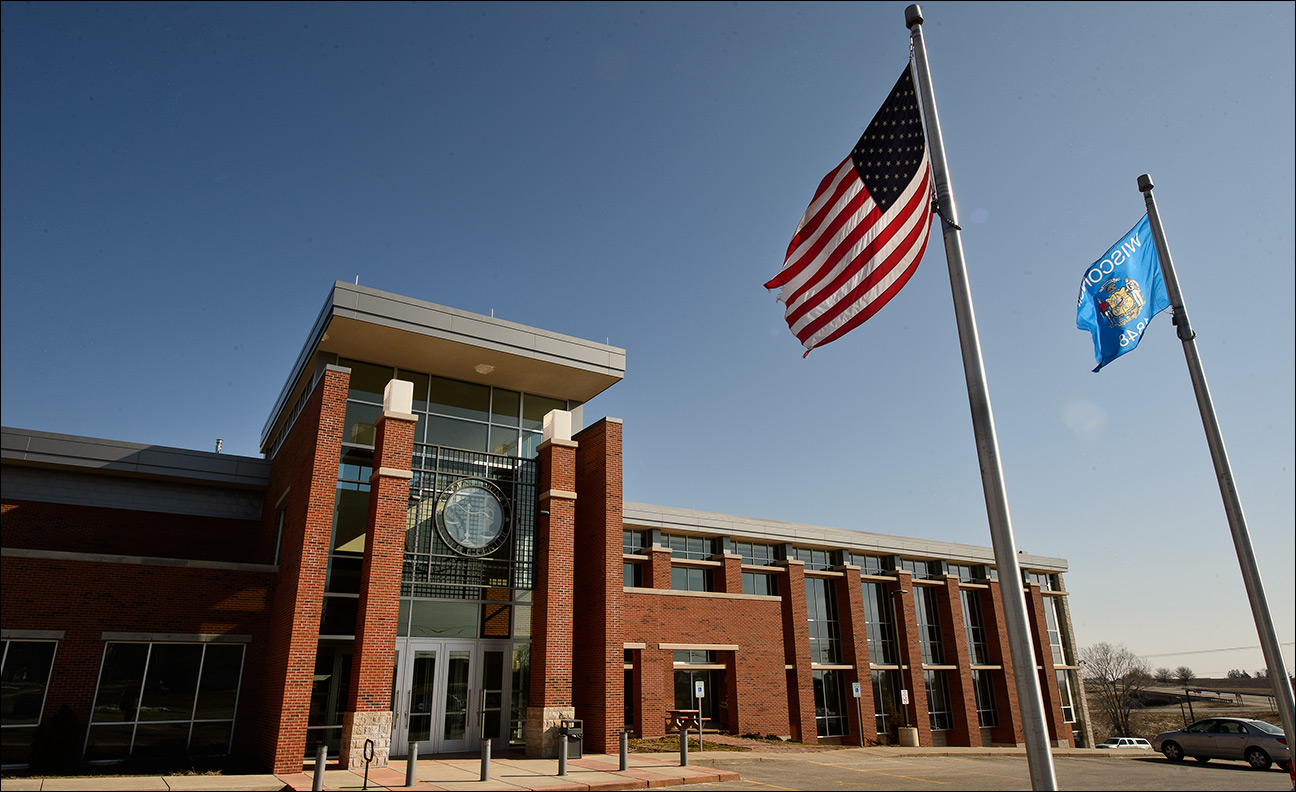Milwaukee County monitors caseloads to stay efficient
By: Jonathan Anderson//December 20, 2012//

Crunching numbers might not seem like a judicial responsibility, but in Milwaukee County Circuit Court, it’s a necessity.
Chief Judge Jeff Kremers’ monthly analysis of case filings — including examination of case lengths, number of filings and more — is crucial to keep the state’s largest circuit court running smoothly.
“When you’re looking at any kind of statewide analysis,” said Iowa County Circuit Judge William Dyke, chairman of the state Committee of Chief Judges, “Milwaukee tips the scale because of the sheer volume. The statewide system is dependent on Milwaukee’s patterns.”
Through his analysis, Kremers tries to get a sense of how well cases moved through Milwaukee County’s court system in the previous month and adjust accordingly.
“Over time,” Kremers said, “if we see that a particular division is getting too many cases per judge to handle, then we’ll shift a judge into that division.”


Analysis requires much more than a basic ability to crunch numbers, however.
At first glance, tracking caseload information might seem like a fairly straightforward task. The monthly numbers come from the state’s online court database. The Office of State Courts rolled out special software, called Judicial Dashboard, in 2010 so judges easily could manage cases. And for historical context, the county clerk of circuit court publishes the data in an annual report directly sent to the chief judge.
According to the 2011 report, for instance, the quantity and nature of case filings in Milwaukee County have shifted over the past few years. Total cases filed decreased 5.2 percent in 2011 compared to 2008 — a difference of a little less than 7,900 cases. In that same time period, case filings dropped by 17.4 percent or almost 1,000 cases in children’s court, by 9 percent or more than 6,000 cases in civil court and by 5.7 percent or about 3,500 cases in criminal court. Two divisions saw increases: family court, which marked a 21 percent increase of more than 1,900 cases, and probate court, which saw an 8.8 percent increase of about 750 cases.
Those numbers don’t tell the whole story, though, Kremers said. Fluctuations in case filings can be dependent on a whole range of factors, such as a change in a law that criminalizes an act and spurs an increase in charges.
Numerous other factors also affect changes in case filings, court administrators said. The district attorney’s office might rely more heavily on deferred prosecution agreements or diversion programs for particular crimes, resulting in fewer case filings. Cases that previously weren’t entered into the state’s court database because of a backlog finally might be entered. And some cases simply are more labor and time intensive.
Family court is a prime example of why Kremers’ responsibility to analyze caseloads goes far beyond numbers, Clerk of Circuit Court John Barrett said.
“A traffic ticket, which is counted as one case, and a family case, which may be contested with lawyers on both sides, are vastly different even though they’re both counted as one case,” he said.
Barrett said the rise in family court case filings from 2008-11 was significant. The stress of that increase was magnified because of the prolonged nature of family cases, he said.
“People arguing placement and custody,” Barrett said. “Those get to be very time intensive.”
Family court cases tend to last longer and require more hearings than cases in other divisions, Barrett said, with litigants often returning multiple times over several years. Yet that isn’t reflected in aggregate data on how many cases are filed.
“Unlike almost any other court, we have a very large post-judgment group of cases that aren’t captured here when you talk about a new case filed,” Milwaukee County Family Court Commissioner Sandra Grady said. “Until a child is 18, or until all the issues are resolved, people can come back to family court over and over again post judgment.”
As a result of the ongoing nature of cases, Grady said, parties in family court might have to wait longer for a hearing.
“Our calendars are scheduled farther and farther out,” she said. Post-judgment cases that were filed in late November might not be heard until March or April, Grady said.
Through his ongoing analysis, Kremers helps keep a close eye on personnel needs in each court. When family law cases spiked in 2008 and 2009, for example, an extra judge was added to the division for those years.
On a more temporary basis, judges routinely cover cases in other divisions to alleviate a backlog or preside over hearings that have to be done within a short period of time, Kremers said. Defendants in criminal cases can make speedy-trial demands, for example. If the judge initially assigned to a case where such a demand is made cannot accommodate a trial, Kremers said he would ask a different judge to preside.

“Judges are quite willing to help their colleagues out,” Kremers said. “A judge in one division is helping a judge in another division almost every day.”
While there have been some downward trends in the number of case filings, he said, the overall workload in the court system has remained fairly constant. That regularity is attributed, in part, to the ongoing data analysis and close watch of staff workloads.
“Our data systems are much better than they used to be,” Kremers said, “which enable us to make better use of dwindling resources in resolving cases close to the same rate we’ve always done.”
Legal News
- State Bar leaders remain deeply divided over special purpose trust
- Former Wisconsin college chancellor fired over porn career is fighting to keep his faculty post
- Pecker says he pledged to be Trump campaign’s ‘eyes and ears’ during 2016 race
- A conservative quest to limit diversity programs gains momentum in states
- Wisconsin prison inmate pleads not guilty to killing cellmate
- Waukesha man sentenced to 30 years for Sex Trafficking
- 12-year-old shot in Milwaukee Wednesday with ‘serious injuries’
- Milwaukee man convicted of laundering proceeds of business email compromise fraud schemes
- Giuliani, Meadows among 18 indicted in Arizona fake electors case
- Some State Bar diversity participants walk away from program
- Wisconsin court issues arrest warrant ‘in error’ for Minocqua Brewing owner
- Iranian nationals charged cyber campaign targeting U.S. Companies
WLJ People
- Power 30 Personal Injury Attorneys – Russell Nicolet
- Power 30 Personal Injury Attorneys – Benjamin Nicolet
- Power 30 Personal Injury Attorneys – Dustin T. Woehl
- Power 30 Personal Injury Attorneys – Katherine Metzger
- Power 30 Personal Injury Attorneys – Joseph Ryan
- Power 30 Personal Injury Attorneys – James M. Ryan
- Power 30 Personal Injury Attorneys – Dana Wachs
- Power 30 Personal Injury Attorneys – Mark L. Thomsen
- Power 30 Personal Injury Attorneys – Matthew Lein
- Power 30 Personal Injury Attorneys – Jeffrey A. Pitman
- Power 30 Personal Injury Attorneys – William Pemberton
- Power 30 Personal Injury Attorneys – Howard S. Sicula
















